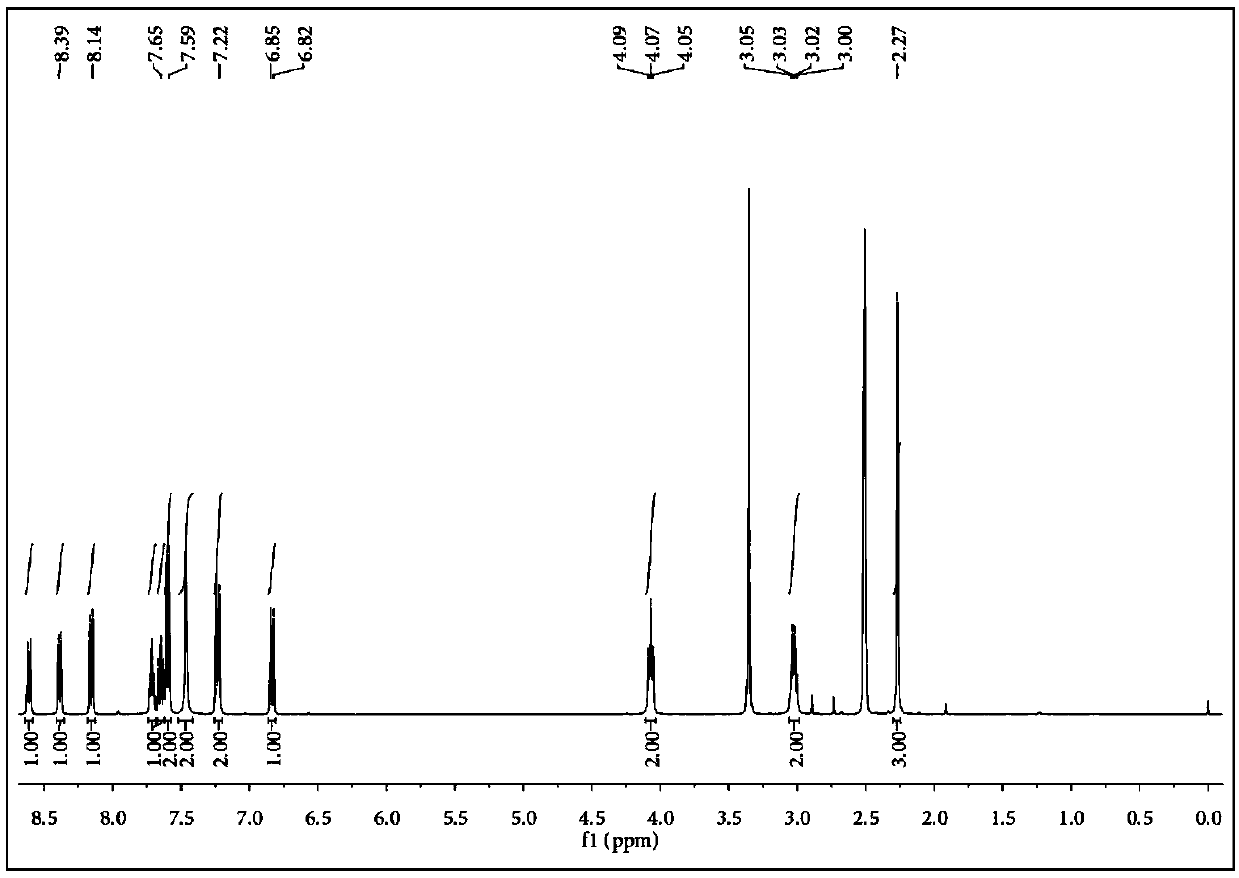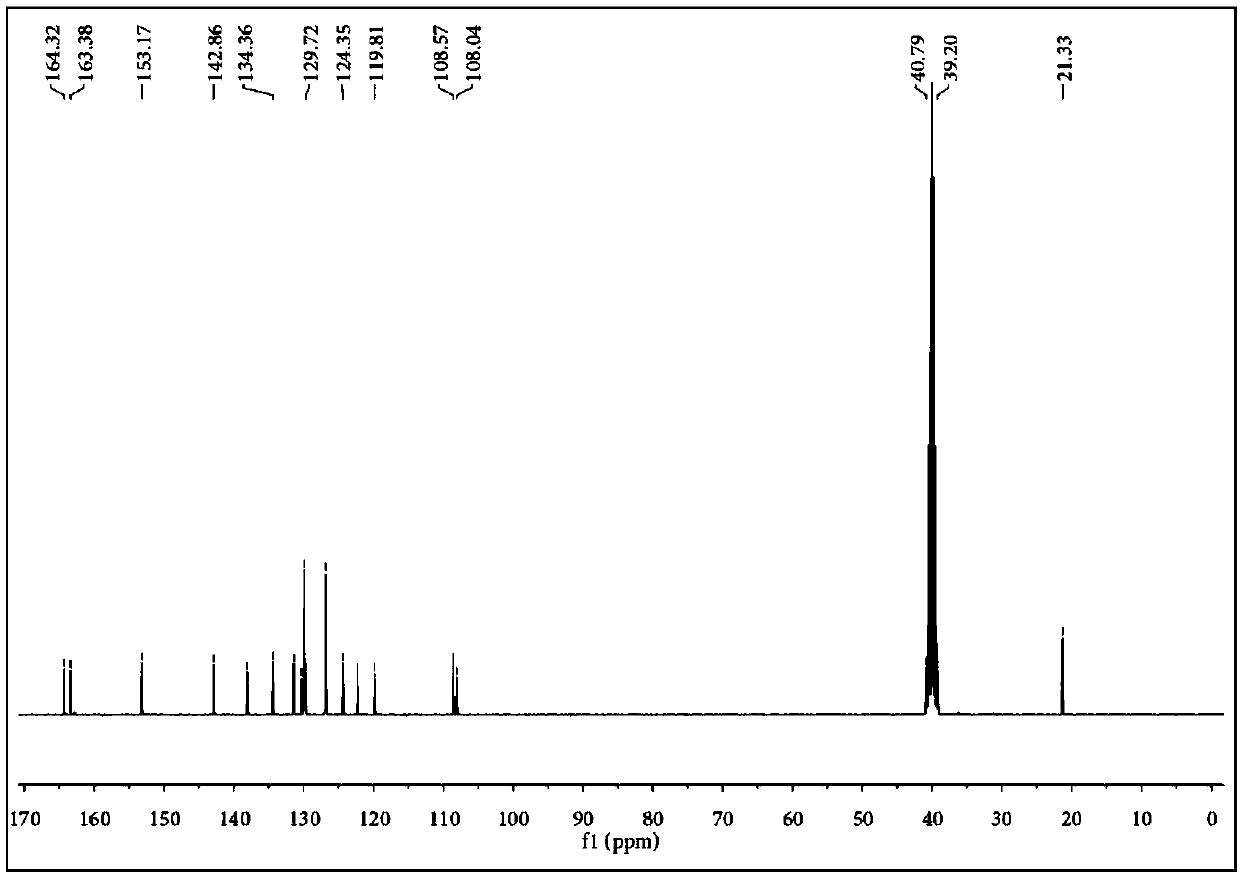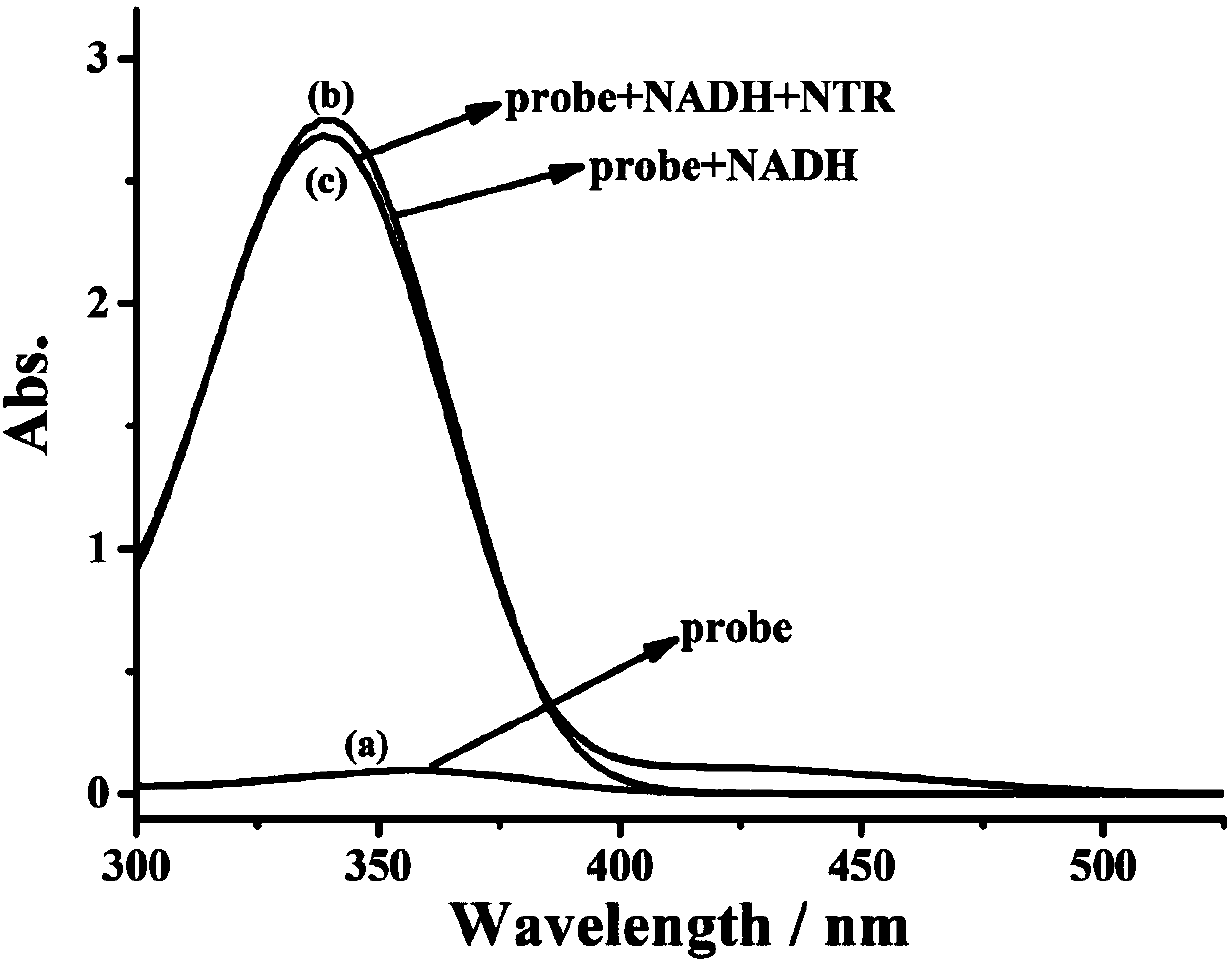Endoplasmic reticulum-targeted two-photon nitroreductase fluorescent probe as well as synthesis method and application thereof
A nitroreductase, fluorescent probe technology, applied in fluorescence/phosphorescence, chemical instruments and methods, luminescent materials, etc., to achieve the effects of high yield, high sensitivity and simple synthesis method
- Summary
- Abstract
- Description
- Claims
- Application Information
AI Technical Summary
Problems solved by technology
Method used
Image
Examples
Embodiment 1
[0044] Example 1 Synthesis of fluorescent probes.
[0045] In a 25 mL round-bottomed flask, slowly add ethylenediamine (compound 1) 1 mmol dropwise to toluene (5 mL) at 40 °C, add 1.0 mmol p-toluenesulfonyl chloride (compound 2) while fully stirring, and heat After refluxing for 3-4 h, cool to room temperature, add 5ml of 2M HCl aqueous solution to the reaction, remove the filter residue by suction filtration, neutralize the filtrate with NaOH until a large amount of white solids are precipitated, filter under reduced pressure, and dry the solid in vacuum to obtain a solid N - (2 - aminoethyl) - 4 - methyl sulfonamide (compound 3), yield: 72%. The product was directly subjected to the next reaction without purification.
[0046] In a 100 mL round bottom flask, add 243 mg 4-nitronaphthalene dicarboxylate (compound 4) (1 mmol) and 20 mL ethanol, add 0.1 mL triethylamine and 321 mg N-(2-aminoethyl )-4-methylbenzenesulfonamide (compound 3) (1.5 mmol), then heated to reflux for 6...
Embodiment 2
[0048] Example 2 Fluorescence Probe Na-ER-NTR Absorption Spectrum Test
[0049] The fluorescent probe Na-ER-NTR in Example 1 was weighed and prepared into a 1 mM stock solution with dimethyl sulfoxide (DMSO).
[0050] Take 25 μL of the probe mother solution and add it to three identical 5 mL volumetric flasks, add 225 μL of DMSO solution, and add reduced coenzyme I (NADH, final concentration 300 μM) to two of them. One of the two coenzyme-added volumetric flasks was added with phosphate buffered solution of nitroreductase (final concentration 2.0 μg / mL), and the other was not. All the three volumetric flasks were made to volume with phosphate buffer solution (0.01M PBS, pH = 7.4) and reacted at 37°C for 60 min, and then the absorption spectrum test was carried out, with the wavelength as the abscissa and the absorbance as the ordinate. figure 2 . Depend on figure 2 It can be seen that the absorption intensity of a single probe is very small, and there is a weak absorption...
Embodiment 3
[0051] Example 3 Kinetic test of the interaction between fluorescent probe Na-ER-NTR and nitroreductase.
[0052] Dilute the fluorescent probe master solution in Example 2 into a 5 μM probe working solution for later use.
[0053] Prepare a series of solutions of nitroreductase at concentrations of 0, 0.5, 1.0, 1.5, 2.5, and 5.0 μg / mL in PBS with a concentration of 0.01 M at pH = 7.4.
[0054] The probe working solution was mixed with different concentrations of nitroreductase, and the final concentration of NADH was 300 μM, and then the fluorescence detection (λ ex = 440 nm, λ em = 545 nm), tested every 3 min for 80 min, recorded the fluorescence intensity in each system over time, and established a curve of fluorescence intensity over time, as Figure 4 As shown, the fluorescence intensity of the reaction system gradually increased, and tended to be stable at nearly 60 min, and the fluorescence intensity of the reaction system reached saturation.
PUM
 Login to View More
Login to View More Abstract
Description
Claims
Application Information
 Login to View More
Login to View More - R&D
- Intellectual Property
- Life Sciences
- Materials
- Tech Scout
- Unparalleled Data Quality
- Higher Quality Content
- 60% Fewer Hallucinations
Browse by: Latest US Patents, China's latest patents, Technical Efficacy Thesaurus, Application Domain, Technology Topic, Popular Technical Reports.
© 2025 PatSnap. All rights reserved.Legal|Privacy policy|Modern Slavery Act Transparency Statement|Sitemap|About US| Contact US: help@patsnap.com



